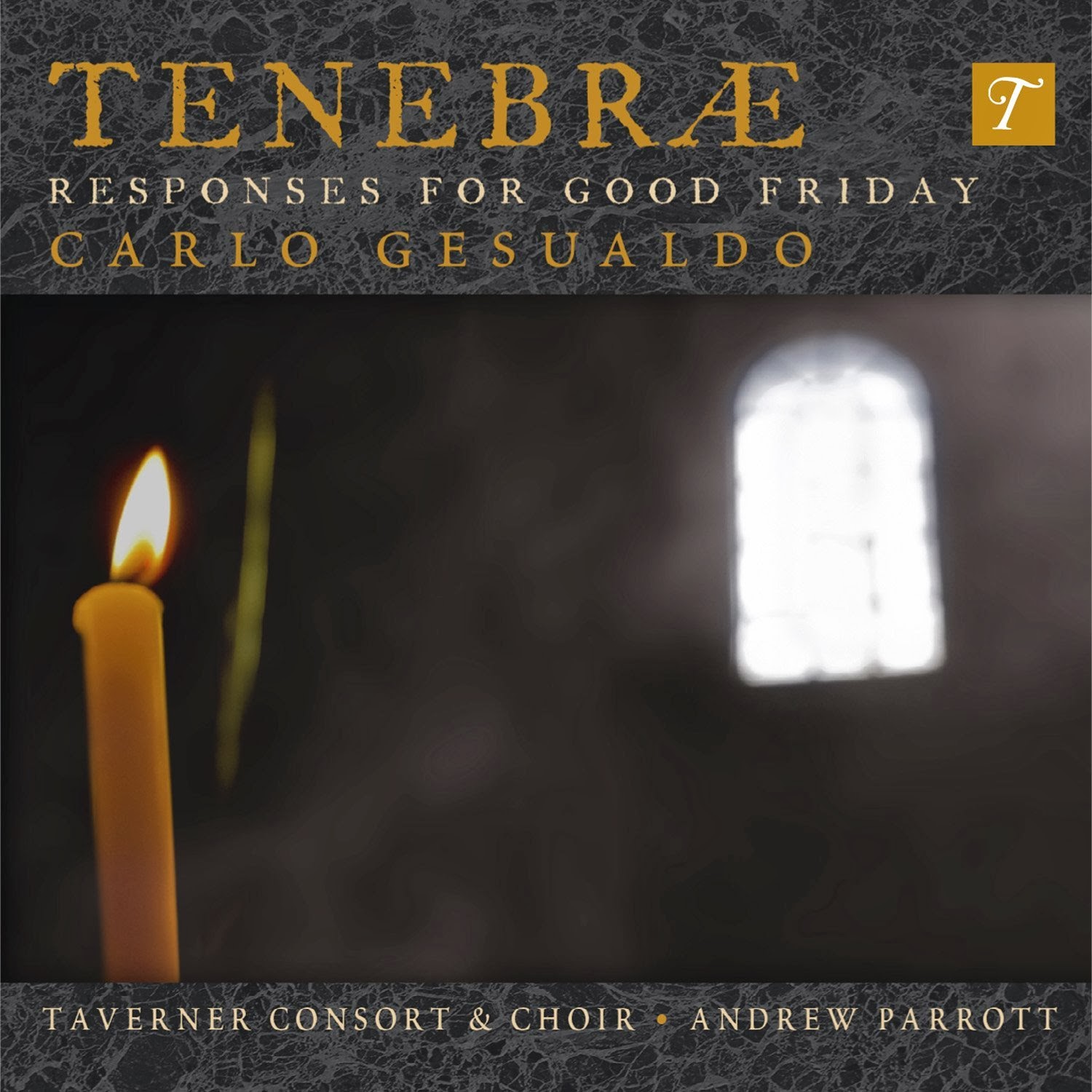Sadly Gesualdo is often better known for the fact that he
murdered his wife and her lover. It was in 1586 that Gesualdo married his
cousin, Maria d’Avalos, daughter of the Marquis of Pescara. On 16th October
1590, Maria was discovered ‘in flagrante delicto di fragrante peccato’ with
Fabrizio Carafa, Duke of Andria, by her husband. The notoriety caused by the
murder compelled him to retire to his estate at Gesualdo. It was only his
marriage to Leonora d’Este, the niece of Duke Alfonso II, in 1593, that
rehabilitated Gesualdo, enabling him, in 1594, to travel to Ferrara, at the
time a brilliant musical centre. Apart from occasional visits to his estate in
Gesualdo, he stayed in Ferrara until 1596, mainly occupied with music making.
There is no doubt that Gesualdo’s music can be highly
individual, with unusual part writing and odd chromatic shifts. Nevertheless,
his music produces some fine effects in uplifting settings that can match any
music from the period.
Gesualdo’s surviving compositions include six books of
Madrigals, Sacrae Cantiones I, for five voices (1603) and Tenebrae Responses
for Maundy Thursday, Good Friday and Holy Saturday, each for six voices (1611).
It is the Tenebrae
Responses for Good Friday (1611) that are featured on a new release from Avie
Records www.avie-records.com issued just at the end of the
quatercentenary year of Gesualdo’s death. The responses are performed by the
Taverner Consort and Choir http://taverner.org
directed by Andrew Parrott http://taverner.org/andrew-parrott
 |
| AV2305 |
In I. Nocturno.
The plainchant brings some terrific singing from the
Taverner Choir that really benefits the Antiphon
– Astiterunt reges terrae. Psalm: Quare fremuerunt gentes (Psalm 2) Antiphon:
Astiterunt reges terrae, adding textures and interest.
Lectio I: De
Lamentatione…Heth brings soloist Jeremy White who sings the chant with
beautiful nuances. What a terrific choral sound emerges in the Resp. i: Omnes amici mei with
Gesualdo’s strange harmonies providing a unique and stunning contrast. This
really should be heard to be believed, especially as sung by the Taverner
Consort who beautifully blend Gesualdo’s odd textures and harmonies and bring a
lovely rubato to their singing. Their voices are equally fine across the range.
Angus Smith is the soloist for the plainchant Lectio II: Lamed, a fine performance,
full of character, giving a degree of feeling to the text. Gesualdo’s harmonic
shifts return for the Resp. ii: Velum temple,
with superb singing form the Taverner Consort, full of superb dynamics and
tempi. It is surprising what a lovely full sound just this small consort of
singers can make.
Lectio III: Aleph
brings Ben Parry, another fine soloist with terrific diction. The gorgeous part
writing in Resp. iii: Vinea mea electa
is so finely handled by Parrott and his consort, a terrific piece full of
changes and interest.
In II. Nocturno
The Taverner Choir provide an impressive sound in the Antiphon: Alieni insurrexerunt – Psalm: Deus
in nomine tuo (Psalm 53) – Antiphon: Alieni insurrexerunt.
Lectio IV: Ex
Tractatu…Protexisti me brings a rather distinctive form of chant
brilliantly sung by Nicolas Robinson with the acoustic working just right for his
voice.
Resp. iv: Tamquam ad
latronem has some really fine textures, as Gesualdo’s harmonies are blended
with just a hint of Allegri. Richard Wistreich also shows how the acoustic can
work so well in Lectio V: Tanta opera
bona with his fine rich bass/baritone voice.
There is a really outstanding Resp. v: Tenebrae factae sunt with the countertenors sounding out
over the rest of the consort and dramatic outbursts as Christ calls ‘My God,
why have you abandoned me?’ This whole response is sung with such sensitivity
and power of feeling.
Lectio VI: Exacuerunt
tamquam brings the fine voiced Jeremy White again before the final respond
of this section, Resp. vi: Animam meam
dilectam which brings some really fine writing from Gesualdo, full of
gentle pathos, yet with some madrigal style interspersions.
In III. Nocturno
In the Antiphon:
Captabunt in animam justi – Psalm: Deus ultionum Dominus (Psalm 93) – Antiphon:
Captabunt in animam justi the choir and acoustic again work most
effectively.
Richard Wistreich brings his fine, distinctive voice again
in the Lectio VII: De Epistola…Festinemus
and there is a soaring Resp. vii: Tradiderunt me as the
Consort cry out, ‘They have passed me into the hands of the impious.’ The
countertenors sound out beautifully as do the lovely rich bass.
Ben Parry returns for the Lectio VIII: Adeamus ergo before the lovely flow of woven textures
in the Resp. viii: Jesum tradidit impius.
Lectio IX: Nec
quisquam brings Jeremy White’s beautifully even and controlled chant before
the final response, Resp. ix: Caligaverunt
oculi mei (My eyes are dimmed with tears) to bring the Tenebrae Responses to
an end with pathos and no immediate consolation. There is extremely fine
singing from the Taverner Consort, controlled and sensitive and beautifully
blended.
These are extremely fine performances of music that is not
only endlessly fascinating but often extremely beautiful.
The recording, made in 1996 for Sony Classical in St
Bartholomew’s Church, Orford, Suffolk, England, is excellent. There are excellent
booklet notes, full texts and English translations.
See also:

No comments:
Post a Comment